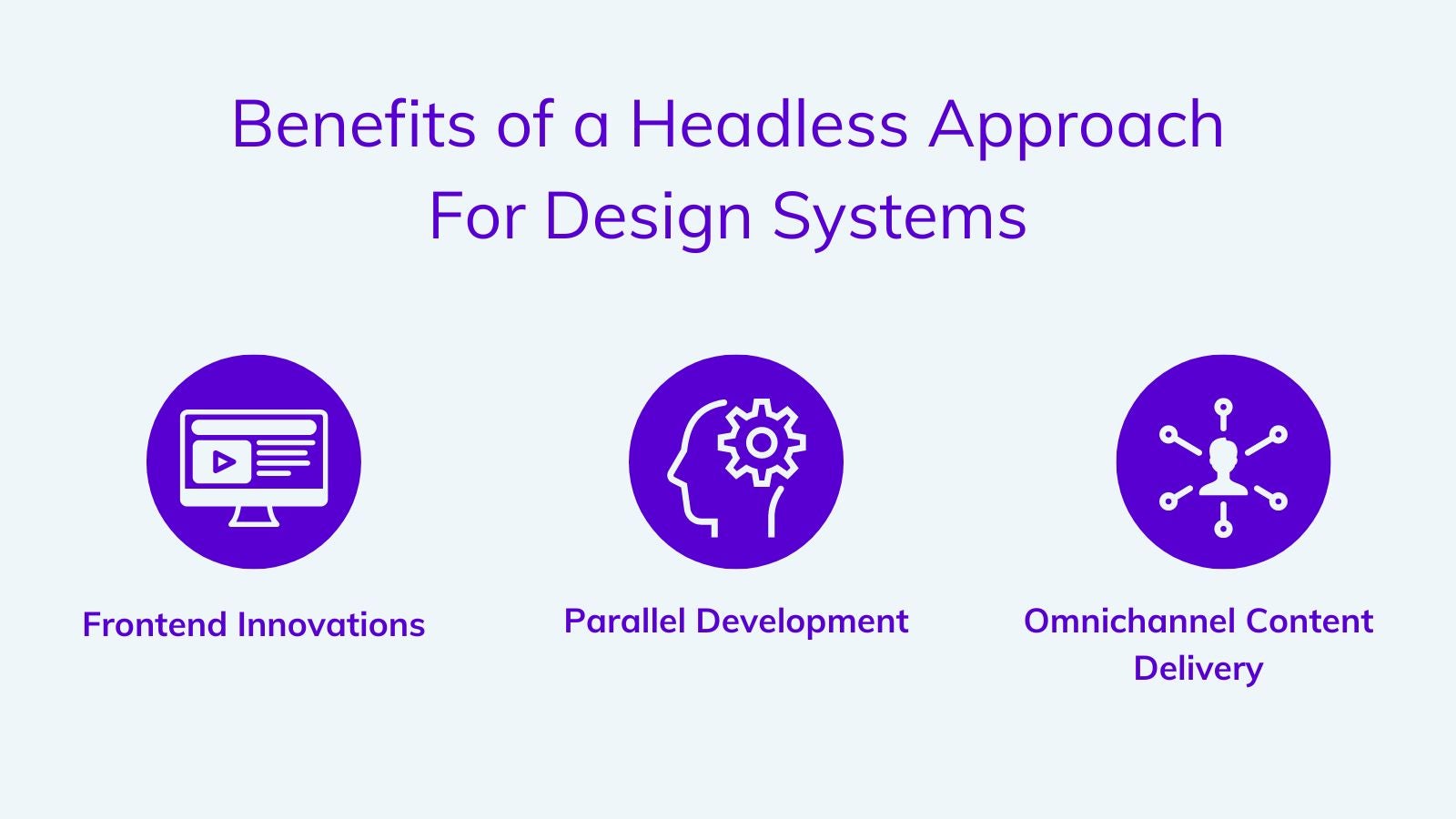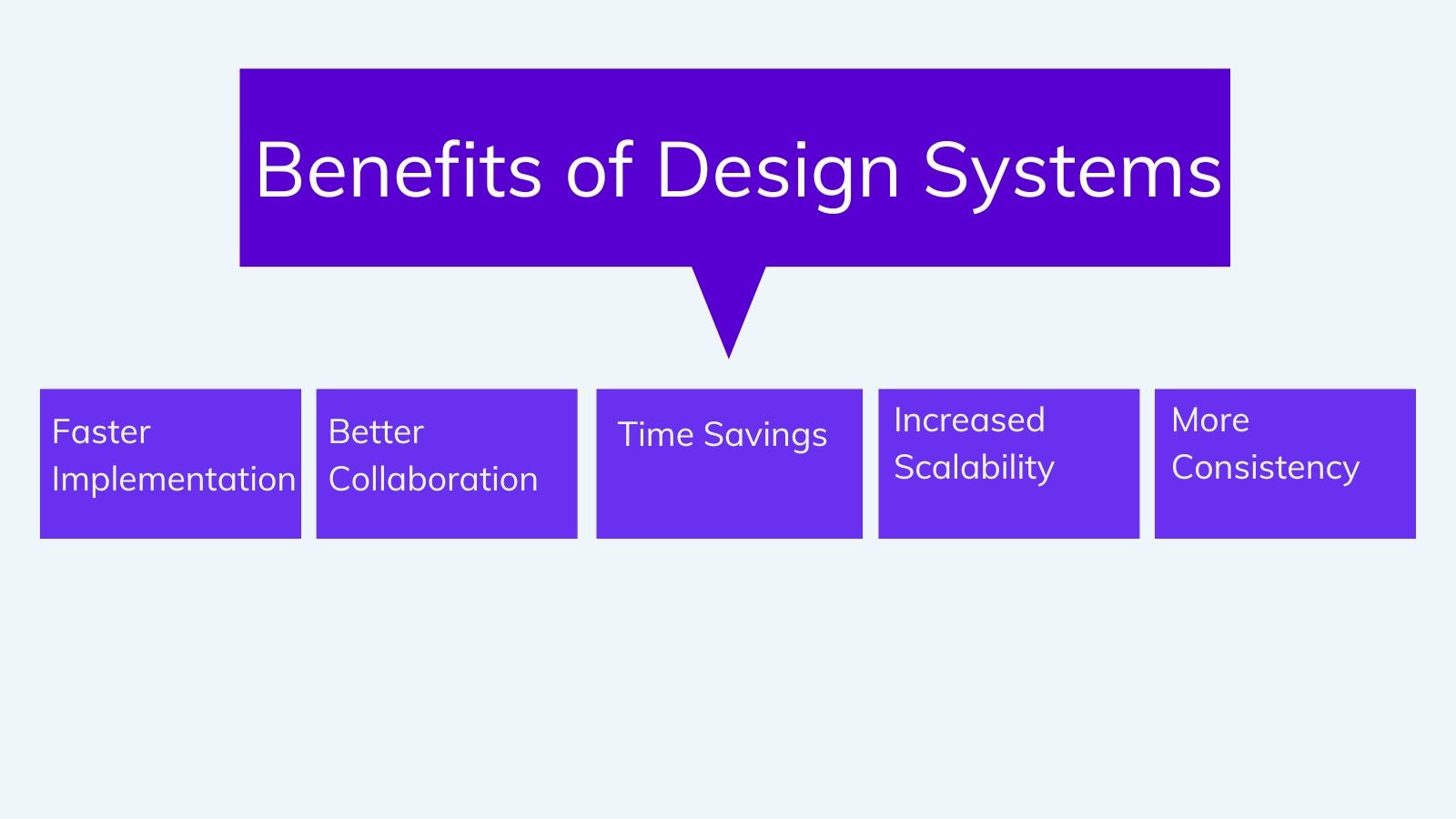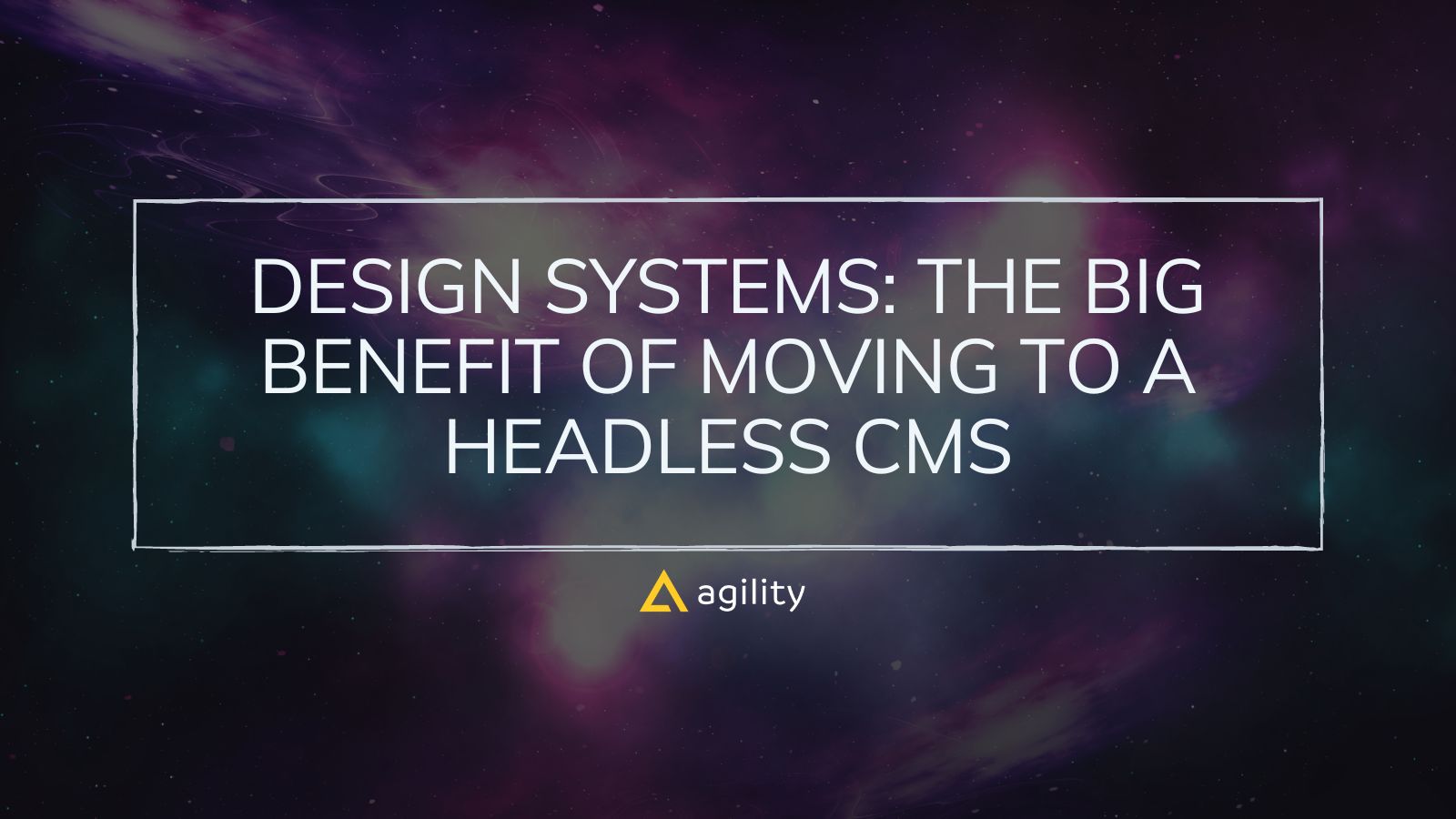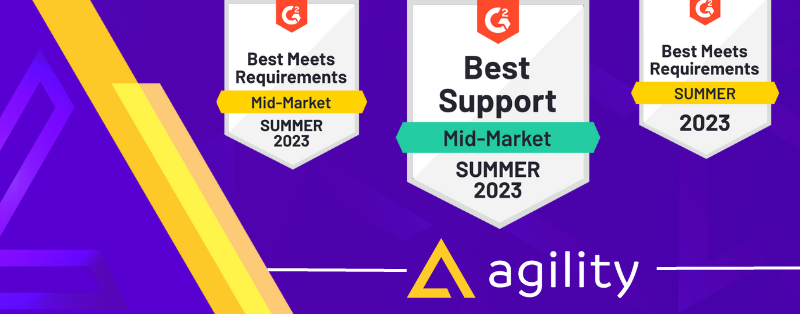Brands today are tasked with creating content for various channels, from websites and smartphones to tablets, digital kiosks, AR & VR headsets, watches, and other smart devices.
According to Statista, the average person worldwide will have almost 4 devices connected to the internet by 2023.
Developers attempting to create these modern digital experiences can often find themselves handicapped by the restrictions of a traditional CMS.
With a template-driven design and tightly coupled architecture, the frameworks they can use and channels where content can be published are often limited.
This traditional approach to content management is also restrictive for marketers and prevents them from accomplishing anything without developer assistance.
However, businesses now have the option of a headless CMS that leverages design systems to build flexible, repeatable, and scalable web applications that fit the modern era.
What Are Design Systems?
Design systems are collections of reusable components with defined use cases that teams can use to build web applications.
These systems provide repeatable templates and design standards to ensure that designs and content remain consistent across multiple channels. For example, design systems can be, but aren’t limited to, templates for blogs, email campaigns, social media platforms, and eCommerce stores.
The components that make up design systems include brand guidelines, marketing guides, and design patterns.
They enable developers, product designers, and marketers to create digital experiences faster and ensure consistency for the brand, no matter who is using them.
How Design Systems In a Headless CMS Work
Design systems in a headless CMS work by applying a component or modular approach to content using content modeling.
Content models enable brands to think about content without worrying about how or where it will be used. Content is defined by creating fields that allow you to develop relationships with other content. A content model provides a structure for content that can be reused for various use cases.
With these design systems, brands can easily determine content strategy and workflows.
Why Businesses Should Consider a Headless Approach For Design Systems
A headless CMS that supports design systems should warrant consideration from brands seeking to deliver what’s required from modern content experiences. Headless architecture, which separates the frontend and backend layers of the CMS, is ideal for design systems because it allows businesses to embrace:

Frontend Innovations
The front-end is the difference-maker for digital experiences; this is where a headless CMS shines. Without the restrictions of traditional CMS templates, developers have the freedom to use the latest frameworks and technologies to create the experience the way they see fit and use tools that best fit their needs.
Parallel Development
Frontend developers previously had to wait on backend developers to complete their work on servers, features, and other elements before they could get started on the user-facing components. With design systems, frontend and backend developers can work together in parallel to accomplish things faster.
Omnichannel Content Delivery
A headless CMS enables omnichannel content delivery. The separated frontend and backend are connected using APIs. These APIs support content delivery to not just a website but also any customer-facing channels, including smartphones and watches, smart speakers, and anywhere the customer wants to consume content.
Benefits of Design Systems
After implementing design systems, businesses should expect to receive the following benefits:

Faster Implementation
Design systems allow companies to accelerate their implementation. Developers and designers no longer need to wait for other stages of the project to be 100% completed before they start their work. Also, design systems can reduce decision fatigue on how to create standard components like blogs, landing pages, and more.
Better Collaboration
Everyone involved in content creation and publication can collaborate better through design systems. With structured content models already in place, teams can work in parallel and better understand how everything should fit together beforehand. They can define workflows and processes that include their needs without stepping on each other’s toes.
Reduced Developer Dependency
Design systems reduce dependency on developers as rigid templates no longer restrict marketers and content creators. They can work independently to complete their tasks, ensuring that content gets managed effectively.
Increased Scalability
Brands that leverage design systems can embrace greater scalability as they can reach decisions faster and implement processes more quickly. This enables faster content creation and makes it easier to scale content creation efforts.
More Consistency
Design systems include brand and marketing guidelines to ensure consistency across multiple content assets. Consumers can receive a cohesive brand experience since those principles can be easily applied across components, regardless of the channel where content will be published.
Challenges of Design Systems
Using a headless CMS to implement design systems has many benefits, but there are also some potential challenges.
Content Authoring
Marketers and content creators can use a headless CMS and design systems to improve collaboration, but some of these platforms lack the user-friendly content authoring experience of traditional CMSs. As a result, the content authoring experience can be challenging.
Learning Curve
Headless platforms provide greater flexibility for developers, but in some cases, this can result in a steeper learning curve. Like the content authoring experience, design systems and content modeling can differ for developers and make an initial challenge as they adjust.
Agility CMS: The Best of Headless & Traditional Content Management Combined
The benefits of design systems are evident despite the minor challenges associated with some headless platforms that lack the best content editor and developer experience.
However, with the suitable headless CMS, a hybrid platform that combines headless architecture with traditional user-friendliness, businesses can fully embrace everything that design systems offer.
Agility CMS is an enterprise-grade headless CMS that blends the features of a headless CMS with the content authoring capabilities of a traditional CMS.
Whereas other headless CMS platforms may lack the right editor experience, Agility CMS enables them to get more done without worrying about getting help from developers.
Agility’s headless architecture allows companies to future-proof their brands and delivers content to any existing channel and channels that haven’t been made available yet.
Plus, integrations with additional software tools are simple, thanks to REST and GraphQL APIs and our SDKs.
Agility provides a built-in Page Management feature for design systems that makes it easy to work with content pages. Editors can do more without developer assistance and leverage built-in SEO fields to optimize content.
In addition, with page modules, content editors can easily compose the content on each page.
Along with Page Management, Agility CMS offers developers starter kits to build content experiences with the latest technologies like Gatsby, Next.js, and Nuxt.js faster.
Discover more about the power of a headless CMS in our eBook: Omnichannel Strategy Ebook: Headless CMS, and learn modern strategies to deliver personalized content across channels.



